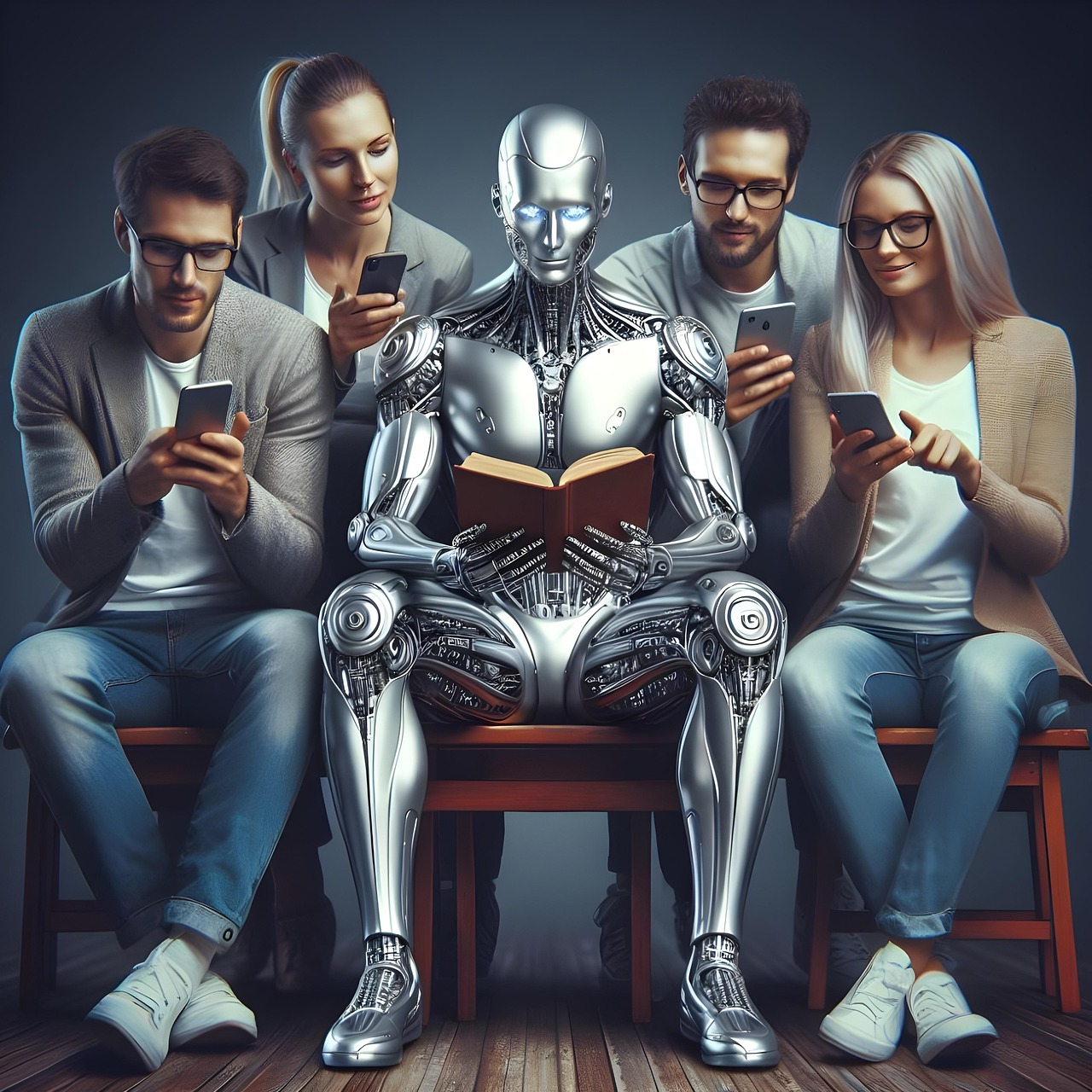
Trendy gadgets is advancing at an unprecedented pace, reshaping the way we live and work. In this rapidly changing environment, it’s not only the latest technological developments that are transforming the future, but also the evolving responsibilities of IT professionals. Research from Gartner on strategic technology Trendy gadgets indicates that the most impactful innovations are poised to disrupt industries and drive business growth in the years ahead.
What does this imply for you? The message is clear: keeping up with emerging technologies is essential to securing a future-ready career. In this article, we’ll guide you through the leading technology trends set to redefine the tech world and highlight the key skills needed to succeed in these areas.
Read more about Historical dramas and period pieces
Read more about Trendy gadgets and technological
Kicking off the list of cutting-edge technology Trendy gadgets, we have the buzzword of 2025: generative AI! This revolutionary technology is taking center stage, transforming industries with its ability to produce highly realistic and sophisticated content—ranging from text and images to audio and intricate simulations. Innovations in generative models, such as GPTs and multimodal AI systems, are fueling new use cases in content creation, automated design, and interactive experiences.
Generative AI isn’t just boosting efficiency and Trendy gadgets—it’s redefining how companies tackle problems, engage with customers, and drive creativity. In 2025, businesses are expected to increasingly embed generative AI into their workflows, enabling faster innovation and delivering personalized services at scale.
Quantum computing harnesses quantum mechanics to perform computations exponentially faster than traditional computers for certain tasks. This year, we’re witnessing applications in cryptography and Trendy gadgets—where quantum machines could challenge current security standards—and in pharmaceuticals, accelerating drug discovery by simulating molecular structures with unprecedented precision.
Although still in its early stages, quantum computing is set to disrupt industries by tackling complex problems that classical computers struggle to solve.Next on the list is 5G! The fifth generation of wireless networks offers dramatically faster download and upload speeds, broader coverage, and more stable connectivity. The rollout of 5G is driving transformative technologies like IoT, augmented reality, and self-driving cars by providing the ultra-fast, low-latency connections they rely on.This network technology is critical for real-time communication and processing massive amounts of data quickly, paving the way for a new era of innovation.
Next-generation VR is delivering more immersive and lifelike experiences. With higher-resolution displays, improved motion tracking, and interactive features, VR is expanding its presence in gaming, professional training, and therapeutic applications.Modern VR devices are also becoming more accessible, featuring lighter headsets and extended battery life, which could lead to wider adoption in everyday life.
In 2025, AR is emerging as a key technology by Trendy gadgets, increasingly integrated into both consumer and enterprise solutions. With advancements in hardware—like next-gen AR glasses—and more capable mobile devices, AR is set to offer richer, more interactive experiences.This technology will revolutionize industries such as retail, real estate, and education by enhancing visualization, learning, and engagement. AR solutions will allow digital information to seamlessly overlay the real world, blending physical and virtual experiences like never before.
Advancements in biotechnology are transforming agriculture by allowing the creation of crops with improved characteristics, such as greater resistance to pests and diseases, enhanced nutritional value, and higher productivity.
Techniques like CRISPR gene editing are being employed to develop crops capable of enduring environmental challenges such as drought and high salinity. This is vital for adapting to climate change and ensuring global food security.
Another emerging technology trend is autonomous vehicles, which rely on AI, sensors, and machine learning to navigate and operate without human input. While fully self-driving cars are still in development, substantial progress is being made in incorporating partial autonomy into public transport and freight systems, potentially reducing accidents, improving traffic flow, and lowering emissions.
Originally created for Bitcoin, blockchain is now being applied in various industries beyond cryptocurrency. Organizations leverage blockchain for its transparency, enhanced security, and ability to prevent fraud. Practical uses include tracing product origins in supply chains, creating secure voting platforms, and maintaining protected medical records.
Want to strengthen your blockchain expertise? Enroll in the Professional Certificate Program in Blockchain and learn the complete technology in just four months! 🎯
Edge computing focuses on processing data close to where it is generated instead of relying entirely on centralized data centers. This is crucial for applications needing immediate data processing and decision-making, avoiding delays associated with cloud computing. Examples include autonomous vehicles, industrial IoT systems, and local data handling in remote areas.
Personalized medicine tailors healthcare and treatment based on an individual’s genetic makeup, environment, and lifestyle. Progress in genomics and biotechnology enables physicians to prescribe treatments that are more effective while reducing side effects.
This approach is especially impactful in cancer care, where therapies can target specific genetic mutations in tumor cells, resulting in improved patient outcomes.
The next rising trend in technology is neuromorphic computing, which involves creating computer chips that imitate the structure and function of the human brain. These chips handle information differently from conventional computers, enabling more efficient processing of tasks such as pattern recognition and sensory data interpretation.This approach can significantly improve energy efficiency and computational performance, especially in scenarios that require real-time learning and adaptive responses.
Advancements in green energy technologies aim to increase the efficiency and lower the cost of renewable energy sources like solar, wind, and bioenergy. Innovations include improved photovoltaic cells, wind turbines that operate at lower wind speeds, and biofuels derived from non-food biomass. Such developments are vital for reducing global carbon emissions and achieving sustainability targets.
and even blood glucose. These devices sync with smartphones and leverage AI to analyze the data, offering personalized health insights and early warnings. This trend is shifting healthcare toward prevention and individualized monitoring.
Extended reality (XR), including virtual reality (VR), augmented reality (AR), and mixed reality (MR), delivers immersive training experiences. Industries like healthcare, aviation, and manufacturing use XR for realistic, risk-free simulations. This technology enhances learning retention, engagement, and lowers training expenses.
Voice-controlled systems have become increasingly advanced, now capable of understanding and interpreting natural speech more accurately. They are widely used in smart speakers, home automation, and customer support bots, enhancing accessibility and convenience. Voice technology is also being integrated into vehicles and public spaces for hands-free interaction.
Commercial space travel is advancing rapidly, with companies like SpaceX and Blue Origin leading the way. These innovations aim to make space accessible not just for professional astronauts but for the general public as well. Current options range from brief suborbital trips offering a few minutes of weightlessness to future plans for full orbital journeys. Space tourism is opening exciting new experiences and driving progress in aerospace technology and scientific research.
Another emerging technology trend is synthetic media, which encompasses AI-generated content such as deepfakes, virtual influencers, and automated video productions. This technology presents important ethical challenges while offering vast opportunities in entertainment, education, and media creation. It enables the production of content that can closely mimic material created by humans.
Robotics has advanced to the point where machines can perform intricate tasks independently or with minimal human guidance. These robots are used across multiple industries, from precise operations in manufacturing to assisting in surgeries in healthcare, as well as providing support in households. Developments in AI and machine learning are making robots increasingly intelligent and versatile.
AI plays a vital role in strengthening cybersecurity by automating complex tasks for identifying and addressing threats. AI technologies can process enormous volumes of data to detect unusual patterns, forecast potential risks, and activate defenses in real time. This capability is essential in countering the growing sophistication and frequency of cyber attacks.
You can gain expertise in ethical hacking, network protection, risk mitigation, and more through the trending Cyber Security Expert Masters Program in just 4 months. Enroll now! 🎯
21. Digital Twins
Digital twins are virtual models of physical objects used for simulation, monitoring, and maintenance purposes. They are widely applied in sectors like manufacturing, automotive, and urban development to enhance efficiency and predict possible issues. By testing changes in a virtual environment, digital twins help companies minimize the costs and time associated with real-world experimentation.
Sustainable technology is becoming increasingly important as organizations focus on eco-friendly solutions to combat climate change and reduce environmental impact.This trend involves creating and adopting technologies that cut energy usage, lower carbon emissions, and support circular economy initiatives. Examples include data centers running on renewable energy, energy-efficient devices, and AI-driven solutions that optimize resource utilization. Sustainable technology reshapes business operations with a long-term focus on ecological balance.
The adoption of sustainable technology is driven by rising consumer awareness, stricter regulations, and the necessity for companies to demonstrate corporate responsibility. Businesses are leveraging IoT, AI, and blockchain to improve sustainability across supply chains, waste management, and energy networks.By 2025 and beyond, embracing sustainable technology will signal environmental commitment and offer a competitive edge, positioning companies as innovative leaders in a market increasingly conscious of ecological impact.
Telemedicine enables patients to consult healthcare professionals through digital platforms, minimizing the need for in-person visits. It became especially crucial during events like the COVID-19 pandemic and continues to expand, integrating more services as a standard form of medical care.
Nanotechnology focuses on manipulating matter at the atomic and molecular scale to develop materials and devices with unique properties. Its applications are extensive, including advanced drug delivery, improved material performance, and innovations in electronics such as smaller, more efficient chips.
AI Trust, Risk, and Security Management (AI TRiSM) is an emerging trend aimed at ensuring AI systems are used responsibly and reliably. It emphasizes transparency, risk control, and security by integrating safeguards, accountability, and thorough risk assessment throughout the AI lifecycle.
AI TRiSM allows organizations to handle AI-related risks effectively while building stakeholder trust and adhering to regulatory standards. By promoting explainability, bias detection, and strong governance, AI TRiSM ensures AI systems remain ethical, secure, and transparent. This framework increases confidence, lowers risk exposure, and encourages sustainable AI adoption aligned with societal and legal expectations, establishing a new benchmark for trustworthy AI deployment.
New technology trends refer to the latest developments, innovations, and breakthroughs in the field of technology. These trends often guide the evolution of industries, businesses, and society, affecting the way we communicate, work, and live.
Keeping up with new technology trends is essential for both individuals and organizations because it helps them remain competitive and up-to-date in an ever-changing digital environment. Staying informed about emerging technologies enables one to make well-informed choices regarding the adoption of new tools, the enhancement of processes, and the utilization of opportunities for growth.




